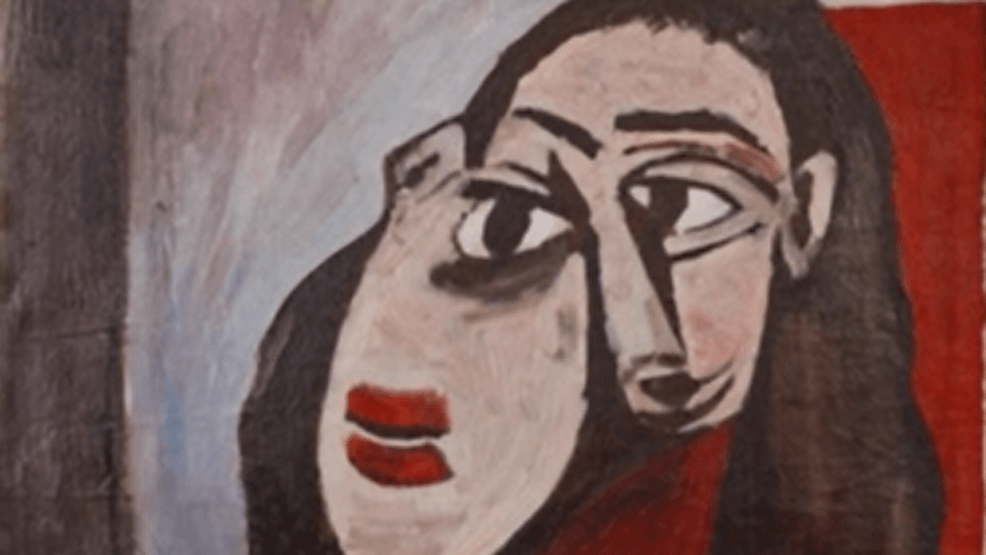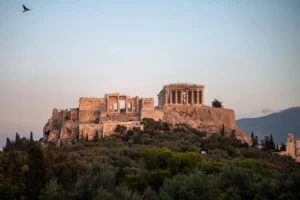
In a world where art is often sequestered in museum vaults or guarded within the pristine walls of private collections, the discovery of a forgotten masterpiece in the most unlikely of places—a dusty basement—revives our fascination with art’s potential for surprise and rediscovery. Recently, a painting found languishing in a basement was confirmed as an original Pablo Picasso, a revelation that has left art critics, collectors, and historians both awestruck and contemplative. How did such a piece, undoubtedly worth millions, end up in such a mundane and unremarkable setting? What does this serendipitous find tell us about the impermanence of art, the fluidity of value, and the elusive nature of provenance?
The Dichotomy of the Ordinary and the Extraordinary
The dichotomy between the painting’s intrinsic value and the humility of its surroundings cannot be understated. This forgotten Picasso—its vibrant colors dulled by decades of neglect, its canvas marred by layers of dust and mold—stood in stark contrast to the sanitized, climate-controlled environments that we typically associate with blue-chip art. In a sense, the painting’s dormant state in an overlooked basement represents a microcosm of the complex interplay between the ordinary and the extraordinary, a juxtaposition that challenges the conventional frameworks through which we perceive and appraise art.
The story of its rediscovery conjures romantic images of the so-called “sleepers” of the art world—those rare, overlooked works of immense value that surface only after being hidden in plain sight. Art history is peppered with such tales: a lost Caravaggio discovered behind a nondescript church altar, a Rembrandt hidden within a 19th-century portrait. Yet, the discovery of this Picasso feels especially significant in the context of a 21st-century art market where everything seems knowable, trackable, and commodified. The fact that a genuine Picasso, produced by one of the most iconic artists of the modern era, could evade detection for so long speaks volumes about the limitations of our systems of categorization and the ever-present potential for human error.
The Question of Provenance and the Value of Authenticity
Central to the painting’s newfound value is the notion of provenance, the history of ownership that serves as a sort of pedigree for works of art. The painting’s lack of an established provenance raises important questions about how we ascribe value to art objects. For years, this painting was likely dismissed as a reproduction or forgery, its potential suppressed by the absence of a paper trail linking it to Picasso himself. Its confirmation as an original disrupts the hierarchy of authentication that often privileges documents and signatures over visual or stylistic analysis.
This disruption is not without controversy. The art market has long relied on provenance as a safeguard against the rampant forgery that plagues works by artists like Picasso, who are known for both their prolific output and their propensity for experimentation. Without the safety net of a clear lineage, even a painting by a universally recognized master like Picasso is susceptible to skepticism. This painting’s authentication required a confluence of scientific techniques, from X-ray fluorescence spectroscopy to stylistic comparison with other documented works, highlighting the increasingly technical nature of art authentication in an era of digital imaging and algorithmic analysis.
### The Cultural Significance of a Lost Picasso
Beyond its market value, this painting’s rediscovery carries profound cultural implications. Picasso’s work, emblematic of 20th-century avant-garde movements like Cubism and Surrealism, embodies a radical break from classical modes of representation. His paintings are visual essays on fragmentation and abstraction, each one a testament to his restless search for new ways of seeing. The sheer diversity of Picasso’s oeuvre makes every new addition to his body of work a unique window into his creative evolution.
The painting’s newfound status as an authentic Picasso invites us to reconsider its place within the larger tapestry of his career. Where does it fit in relation to his Blue Period, his Rose Period, his flirtations with African art, and his Cubist deconstructions of space and form? Every authenticated Picasso tells a slightly different story of his artistic development, and this painting—lost for decades and now reborn—has the potential to offer new insights into his stylistic transitions and thematic preoccupations.
Moreover, the painting’s discovery adds a layer of intrigue to Picasso’s already complex legacy. For an artist who produced thousands of works in a variety of media—paintings, sculptures, ceramics—Picasso’s legacy is marked by its expansiveness. His prolific nature makes it unsurprising that some works would fall through the cracks of history, yet the emotional resonance of such a find cannot be overstated. Each rediscovered Picasso serves as a reminder that the history of art is not static but constantly evolving, shaped as much by the vagaries of fate as by deliberate scholarly effort.
Valuation, Auction Houses, and Market Dynamics
With the painting now authenticated, the inevitable question looms: what is its market value? Initial estimates suggest that the painting could fetch millions at auction, a testament to Picasso’s enduring status as a marquee name in the art market. Yet, the process of valuing a newly discovered work involves more than simply appraising its aesthetic qualities or historical importance. The painting’s journey from basement obscurity to auction house spectacle is, in itself, a narrative that adds to its allure. Collectors are not merely buying a Picasso; they are buying a piece of art history replete with its own mythos of loss and recovery.
Auction houses like Sotheby’s and Christie’s have built entire brands around the mystique of rediscovered art, and the sale of this painting will likely be no exception. The inevitable marketing campaign will emphasize the painting’s dramatic journey from basement to spotlight, framing its rediscovery as a triumph of perseverance and expertise. But behind the spectacle lies a complex web of market dynamics. While the painting’s auction price will no doubt reflect Picasso’s blue-chip status, it will also be influenced by broader trends in the art market, including the growing demand for works with storied provenances and the burgeoning interest in Picasso’s lesser-known periods and styles.
Art as a Mutable Commodity
The painting’s trajectory—from disregarded artifact to multimillion-dollar masterpiece—illustrates the temporality of value in the art world. Art, unlike other commodities, is subject to fluctuations that are as much cultural as they are financial. The very fact that this Picasso could be relegated to a basement in the first place suggests that value is not inherent but constructed. Its authentication is not merely a confirmation of its physical attributes but an act of cultural and financial reinvention.
This temporality is particularly relevant in an era where the art market is increasingly globalized and digitized. Platforms like Artsy and Artnet, alongside traditional auction houses, have accelerated the commodification of art, transforming even the most obscure works into objects of speculation. Yet, the discovery of this Picasso serves as a counterpoint to the art market’s insatiable appetite for novelty and turnover. It is a reminder that the true value of art often lies in its ability to transcend time, to reassert its presence even after decades of neglect.
The Romanticization of the Basement Find
The romantic allure of basement discoveries is a staple of art world narratives, feeding into our collective fascination with the idea of lost treasures awaiting rediscovery. These stories tap into a deep-seated desire for the extraordinary to emerge from the mundane, for the act of unearthing to yield something of immense value. This Picasso’s discovery is no exception, playing into a narrative that casts the basement as a liminal space—part archive, part purgatory—where art lies dormant, waiting for the right moment to resurface.
Yet, this romanticization can obscure the more complex realities of art recovery. The painting’s time in the basement, though poetic in hindsight, was likely a period of deterioration and neglect. Its condition, though now stabilized, bears the scars of its prolonged absence from the public eye. The process of restoration—both physical and reputational—raises ethical questions about how we treat objects that straddle the line between the discarded and the revered.
The rediscovery of this Picasso is not merely an addition to the artist’s catalog but a reclamation of lost cultural value. Its authentication is a victory for art history, a testament to the power of connoisseurship and technology to resurrect forgotten works. But it is also a reminder of the precariousness of art’s existence, its susceptibility to the whims of time, place, and circumstance. For decades, this painting lay unseen and uncelebrated, a mute witness to its own potential. Its reemergence challenges us to rethink the very nature of value—cultural, historical, and monetary—and to acknowledge that even the most iconic artists can surprise us in the most unexpected of places.
No comments yet.








